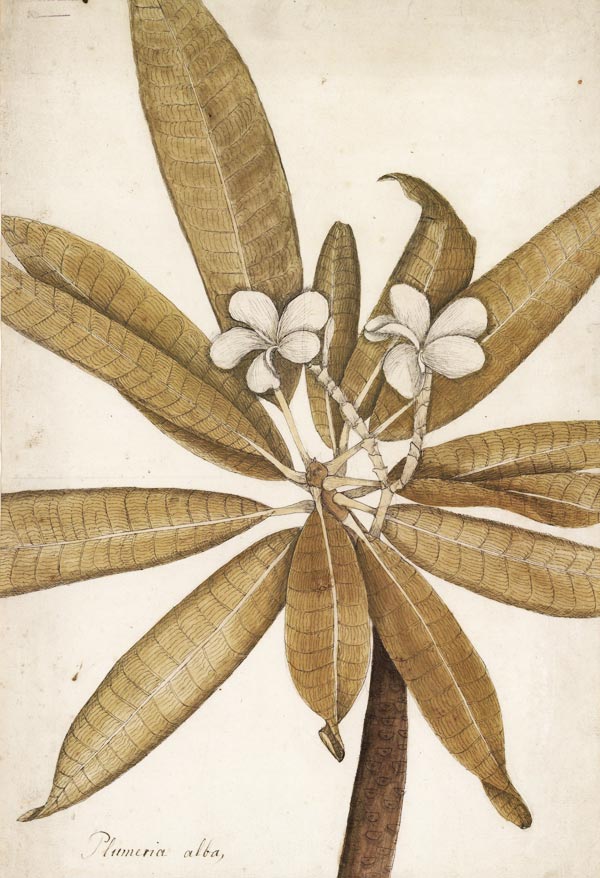Vienna’s Natural History Museum (Naturhistorisches Museum) has restituted 177 botanical drawings and prints to the heirs of Dr. Ernst Moritz Kronfeld. The restitution, while somewhat delayed following a 2011 recommendation by Austria’s Advisory Council under the country’s Law for the Restitution of Artworks from the Austrian National Museums (Bundesgesetz über die Rückgabe von Kunstgegenstände aus den Österreichischen Bundesmuseen), highlights the increasing sophistication of that Advisory Council, particularly compared to recent steps backward by the Limbach Commission in Germany. Austria, once a lightening rod for criticism about confronting wartime and Nazi provenance issues, returned these drawings because of the clear problems with trying to portray any 1941 conveyance by a Viennese Jew as an arms’ length transaction—even without direct evidence of coercion. Just as importantly, it brushed away the defense that the drawings had been acquired in good faith as an excuse to continued possession, a dramatic change from the perspective usually taken by civil law countries.
Vienna Natural History Museum Restitutes Botanical Drawings to Nazi Victims' Heirs, Acknowledges the Too-Often-Ignored Reality of Persecution and Coerced Sales
Topics: Theresienstadt, Lvov, Nationalbibliothek, Galicia, Law for the Restitution of Artworks from the Austr, Germany, Nuremberg, Nazi Victims, Treblinka, Dr. Rudolf Engel, Naturhistorisches Museum, Henry David Thoreau, Hermann Goring, Hitler Youth, Mario Lanzer, Gauleiter, Dr. Ernst Moritz Kronfeld, National Library, Portrait of Amalie Zuckerkandl, Bundesgesetz über die Rückgabe von Kunstgegenständ, Restitution, Clara Levy, Hapsburg, Luxembourg, Vienna Natural History Museum, Ryk van der Schot, Empress Maria Theresia, World War II, The Three Graces, Franz Stefan von Lothringen, Lemberg, Ukraine, Nikolaus Joseph von Jacquinn, Rosalia Kronfeld, Austro-Hungarian empire, Drei Grazien, Lovis Corinth, Museums, Israeli Cultural Society, Austria’s Advisory Council, Gustav Klimt, Schönbrunn, Vienna, Anschluss, Welfenschatz, Baldur von Schirach, Limbach Commission
Secret Witness Contradicted Hildebrand Gurlitt’s Claim to Monuments Men that His Art was Burned in Dresden
From Dresden to Aschbach to Düsseldorf—New Scholarship in U.S. Archives Traces Hildebrand Gurlitt at War’s End, Could Affect Cornelius Gurlitt’s Claim to Good Faith Ownership
The Main Post has an article today (in German) by Christine Jeske tracing the late-war and post-war trajectory of Hildebrand Gurlitt and his now-infamous collection. The article is fascinating, and sheds considerable light on how the collection came through the war and how Gurlitt evaded greater scrutiny that might have revealed the trove’s whereabouts earlier. It also puts into context any claim Cornelius Gurlitt might now have to argue he took possession of the paintings from his father unaware of their provenance—what will be a critical argument, particularly if yesterday’s Cultural Property Restitution Law proposal by Bavaria becomes federal law in German.
Topics: Wiesbaden, Cultural Property Restitution Law, veschollene Kunst, Franken, Franconia, Hildebrand Gurlitt, Cornelius Gurlitt, George Clooney, Erik Berger, Augsburg, Dresden, Nuremberg, Fall Gurlitt, Monuments Men, Gurlitt Collection, Karl Haberstock, Kunstverein, Entartete Kunst, Munich, Heiner Dikreiter, Beutekunst, Freiherr Gerhard von Pölnitz, Bavaria, Kulturgut-Rückgewähr-Gesetz, Nürnberg, Düsseldorf, Schlüsselfeld, Monuments Fine Arts and Archives, Gemäldegalerie Dresden, Christine Jeske, Walter Paech, degenerate art, Städtische Galerie, München, Main Post, Karl and Magdalene Haberstock Foundation, Raubkunst, Verjährung, Nazi Raubkunst, Aschbach



